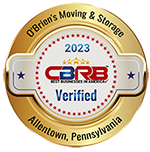Looking for tips to help with your next move? You've come to the right place! We have a number of tips regarding packing, moving, and storage to make your move easy.
Moving Tips
If you are looking for general moving tips like finding the best time to move or how to take care of your plants during a move, check out our moving tips. We also have information on how to tip movers and the difference between an in-home estimate and a virtual estimate.
Household Moving Tips
Getting ready to move to a new house? Wondering how to handle the move with kids and/or pets? Find all our helpful household moving tips here.
Packing Tips
Make packing easy with our efficient packing tips. Learn about the 4 kinds of packing, get helpful tips about packing on your own, and even specialty packing tips.
Cold Weather Moving & Storage Tips
Be prepared to move any item in cold temperatures with our cold weather moving and storage tips.
How to Select a Mover
When choosing the right mover you have to consider a lot of variables such as the company's reputation and licensing. Use our tips about choosing the right mover to ensure you are working with the right company.
Avoid Illegal Movers
Unfortunately, there are moving companies that do not abide by the proper regulations. To avoid working with an illegal mover, read our tips here.
Moving Day Tips
If you are wondering what moving day looks like, we have information to help you understand what to expect on moving day.






